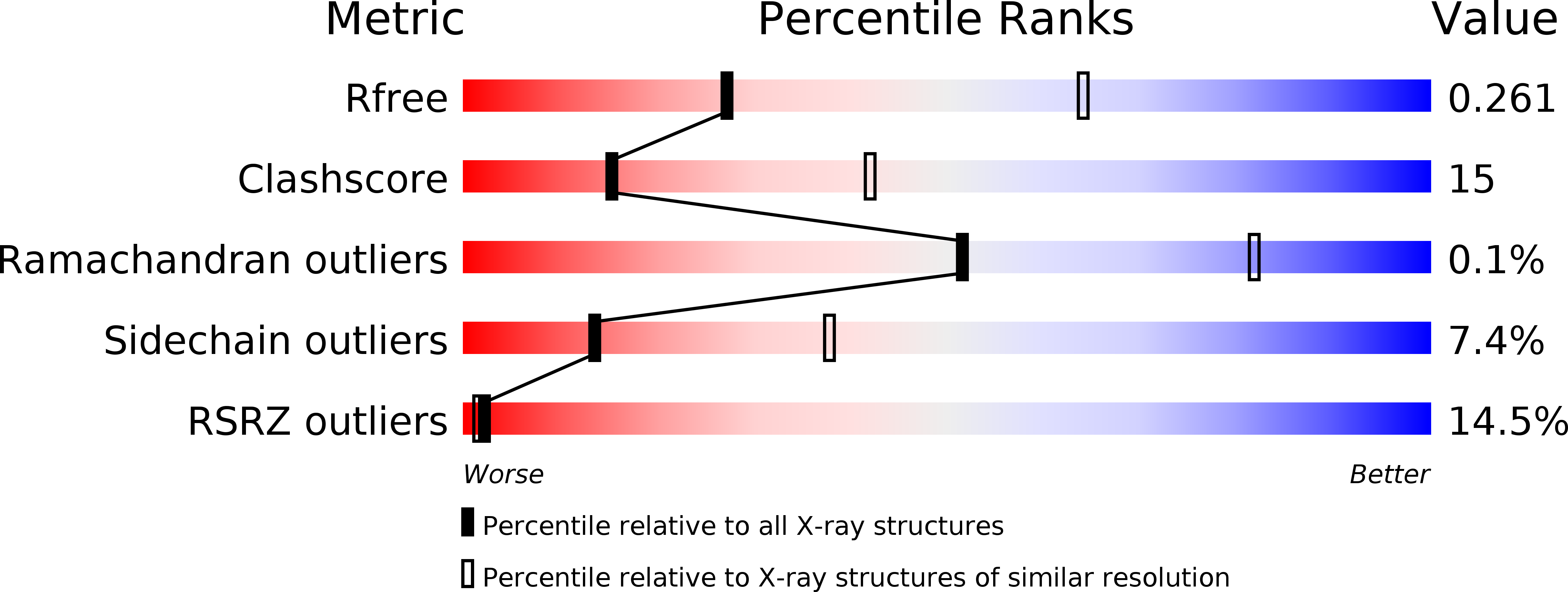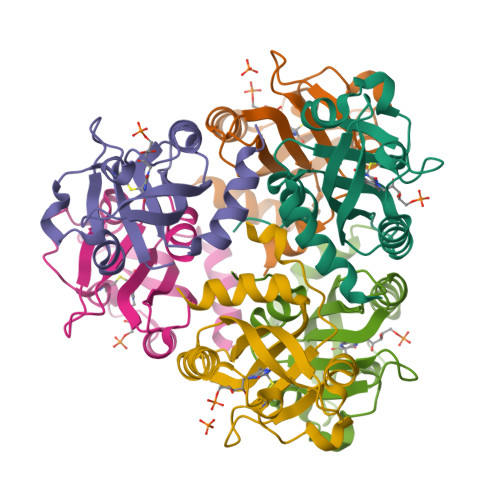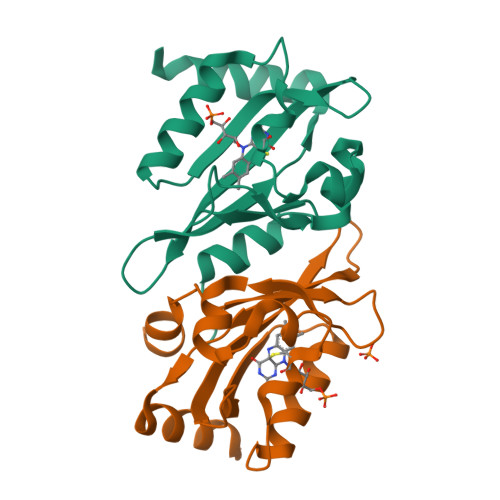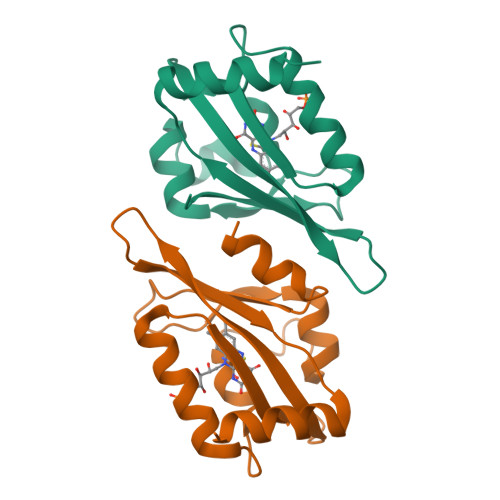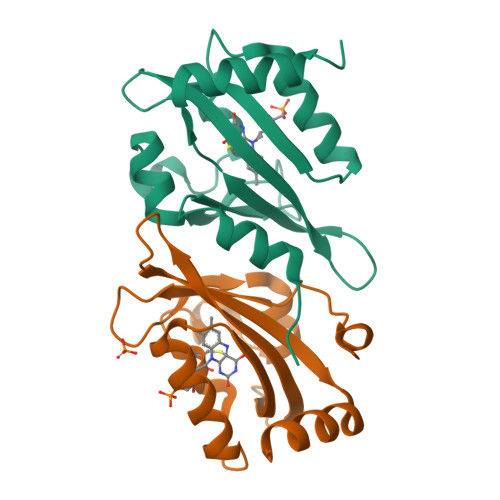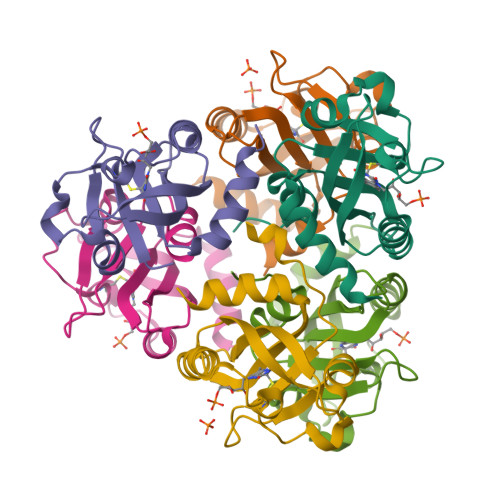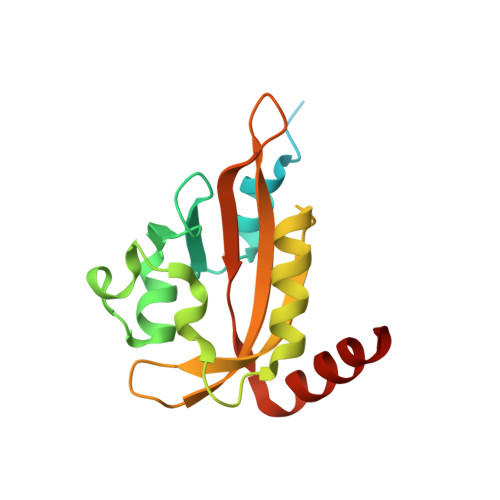Crystal structures of Aureochrome1 LOV suggest new design strategies for optogenetics.
Mitra, D., Yang, X., Moffat, K.(2012) Structure 20: 698-706
- PubMed: 22483116
- DOI: https://doi.org/10.1016/j.str.2012.02.016
- Primary Citation of Related Structures:
3UE6, 3ULF - PubMed Abstract:
Aureochrome1, a signaling photoreceptor from a eukaryotic photosynthetic stramenopile, confers blue-light-regulated DNA binding on the organism. Its topology, in which a C-terminal LOV sensor domain is linked to an N-terminal DNA-binding bZIP effector domain, contrasts with the reverse sensor-effector topology in most other known LOV-photoreceptors. How, then, is signal transmitted in Aureochrome1? The dark- and light-state crystal structures of Aureochrome1 LOV domain (AuLOV) show that its helical N- and C-terminal flanking regions are packed against the external surface of the core β sheet, opposite to the FMN chromophore on the internal surface. Light-induced conformational changes occur in the quaternary structure of the AuLOV dimer and in Phe298 of the Hβ strand in the core. The properties of AuLOV extend the applicability of LOV domains as versatile design modules that permit fusion to effector domains via either the N- or C-termini to confer blue-light sensitivity.
Organizational Affiliation:
Department of Biochemistry and Molecular Biology, University of Chicago, 929 E 57th Street, Chicago, IL 60637, USA.







